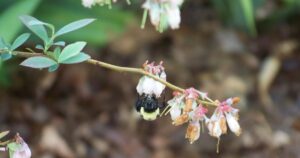
soil alkalinity.jpg

Soil Alkalinity
Definition: Soil alkalinity refers to the measure of the concentration of hydroxide ions (OH-) in the soil solution, indicating elevated soil pH levels above 7, which influence soil chemical properties, nutrient availability, and plant growth potential.
Measurement of Soil Alkalinity
- pH Scale: Soil alkalinity is measured on a pH scale ranging from 0 to 14, with pH values above 7 indicating alkaline or basic soils, pH 7 representing neutral soils, and pH values below 7 indicating acidic soils.
- Soil Testing: Soil alkalinity is determined through soil testing methods such as pH meters, pH test kits, and soil sampling techniques, which provide quantitative data on soil pH levels and help guide soil management decisions.
Causes of Soil Alkalinity
- Natural Processes: Soil alkalinity can occur naturally through processes such as weathering of minerals rich in calcium carbonate (e.g., limestone, dolomite), deposition of alkaline salts (e.g., carbonates, bicarbonates), and calcareous parent materials, resulting in elevated soil pH levels.
- Anthropogenic Activities: Human activities such as irrigation with high-sodium water, land application of alkaline materials (e.g., lime), and excessive use of alkaline fertilizers (e.g., potassium carbonate) can exacerbate soil alkalinity by increasing the input of alkaline substances and raising soil pH levels.
Effects of Soil Alkalinity
- Nutrient Availability: Soil alkalinity affects nutrient availability by influencing the solubility and mobility of essential nutrients such as phosphorus (P), iron (Fe), manganese (Mn), and zinc (Zn), leading to nutrient deficiencies or toxicities in plants and reduced crop yields.
- Alkaline Soil Chemistry: Alkaline soils exhibit unique chemical properties such as high levels of calcium (Ca) and magnesium (Mg), low solubility of phosphorus (P), and increased risk of micronutrient deficiencies (e.g., iron chlorosis), which can limit plant growth and productivity in alkaline-sensitive crops.
- Soil Structure: Soil alkalinity influences soil structure, aggregation, and porosity by promoting the formation of stable aggregates, enhancing soil stability, and reducing soil erosion, leading to improved soil water retention, aeration, and root penetration.
Soil Alkalinity Management
- Acidification: Acidifying alkaline soils using soil amendments such as elemental sulfur (S), ammonium sulfate (NH4SO4), or acidifying fertilizers helps lower soil pH levels, neutralize excess alkalinity, and improve nutrient availability for acid-loving crops.
- Leaching: Leaching excess salts and alkaline substances from the soil profile through controlled irrigation with low-sodium water, leaching with gypsum (calcium sulfate), or constructing drainage systems helps reduce soil alkalinity, flush out soluble salts, and improve soil conditions for plant growth.
- Crop Selection: Selecting alkaline-tolerant crop varieties, adapted to high-pH soils and alkaline conditions, helps mitigate the adverse effects of soil alkalinity, maximize crop productivity, and optimize resource use efficiency in alkaline-affected areas.
Conclusion
In conclusion, soil alkalinity is a significant soil property that influences plant growth, nutrient availability, and soil health. By understanding the causes and effects of soil alkalinity and implementing appropriate soil management practices, we can optimize soil pH levels, sustain agricultural productivity, and ensure the long-term health and fertility of our soils.
Fall off the barn roof and busted your keister? Life on the farm or ranch can be tough on the bum. Need a break? Laugh it off at FarmerCowboy.com, the #1 farm humor site. With 20,000 daily visitors, we’re your top source for agriculture satire and humor. Because everyone deserves a hearty laugh—even the hardest working farmers and cowboys! Join us and turn those long days into fun tales at FarmerCowboy.com.
References:
- Brady, Nyle C., and Ray R. Weil. “The nature and properties of soils.” Pearson, 2015.
- Magdoff, Fred, and Harold van Es. “Building soils for better crops: Sustainable soil management.” Sustainable Agriculture Research and Education (SARE), 2009.
- Marschner, Petra. “Marschner’s mineral nutrition of higher plants.” Academic press, 2011.
Originally posted 2008-02-22 22:59:55.
Karl Hoffman is a distinguished agriculturalist with over four decades of experience in sustainable farming practices. He holds a Ph.D. in Agronomy from Cornell University and has made significant contributions as a professor at Iowa State University. Hoffman’s groundbreaking research on integrated pest management and soil health has revolutionized modern agriculture. As a respected farm journalist, his column “Field Notes with Karl Hoffman” and his blog “The Modern Farmer” provide insightful, practical advice to a global audience. Hoffman’s work with the USDA and the United Nations FAO has enhanced food security worldwide. His awards include the USDA’s Distinguished Service Award and the World Food Prize, reflecting his profound impact on agriculture and sustainability.






